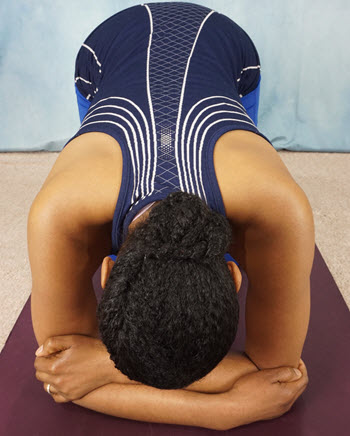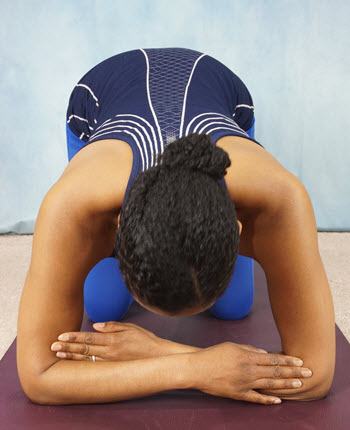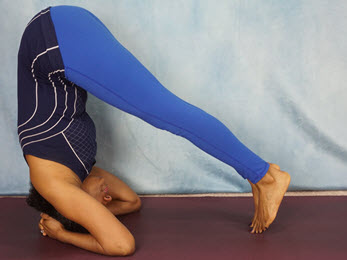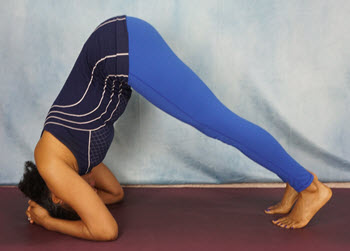
Highlighting form and the hidden wisdom in yoga postures
so you have a more informed practice.
Headstand Pose
If you don’t have a strong base, whatever you build on top of it won’t be stable. This is certainly true of headstand. Here are some tips to help you create a strong foundation for headstand.
While headstand has lots of benefits like toning the upper back and strengthening the core, it’s not for everyone. If you have cervical spine issues, untreated high blood pressure, back or neck issues or glaucoma, headstand is not appropriate for you.

Do
A strong headstand starts with a solid base. The first step to headstand is to properly position your elbows and forearms. Bring your fingertips to the outside edge of your elbows before interlacing them. Your elbows should be no wider than shoulder’s distance apart.

Don’t
One of biggest mistakes I see in headstand is having your elbows too far apart. Don’t bring your fingertips to the inside edge of your elbows because your arms will be too far apart. This causes instability when you come into headstand and places more pressure on your head versus distributing the weight more evenly between your head and arms.

Do
Ensure your spine is straight before lifting into headstand. After positioning your arms on the mat shoulder’s distance apart, come onto your tiptoes and walk your feet in until your spine straightens. Then bring the knees into the chest or kick the legs up.

Don’t
Attempt to lift into headstand when your spine is slanted. When your spine is out of alignment, you won’t be able to stabilize or engage your core.

Transform the Norm
Empowering people to transform the norm and realize their potential for fulfillment and vitality with mind-body practices.
Get in Touch
anika@transformnorm.com
